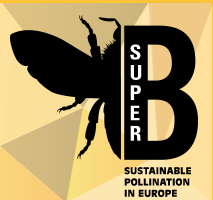A new article published in PLOS ONE takes pollination ecology as a case study to discuss good and bad practises in analyising ecological data.
Abstract:
Studies in ecology are often describing observed variations in a certain ecological phenomenon by use of environmental explanatory variables. A common problem is that the numerical nature of the ecological phenomenon does not always fit the assumptions underlying traditional statistical tests. A text book example comes from pollination ecology where flower visits are normally reported as frequencies; number of visits per flower per unit time. Using visitation frequencies in statistical analyses comes with two major caveats: the lack of knowledge on its error distribution and that it does not include all information found in the data; 10 flower visits in 20 flowers is treated the same as recording 100 visits in 200 flowers. We simulated datasets with various "flower visitation distributions" over various numbers of flowers observed (exposure) and with different types of effects inducing variation in the data. The different datasets were then analyzed first with the traditional approach using number of visits per flower and then by using count data models. The analysis of count data gave a much better chance of detecting effects than the traditionally used frequency approach. We conclude that if the data structure, statistical analyses and interpretations of results are mixed up, valuable information can be lost.
Original Source:
Reitan T, Nielsen A (2016) Do Not Divide Count Data with Count Data; A Story from Pollination Ecology with Implications Beyond. PLoS ONE 11(2): e0149129. doi:10.1371/journal.pone.0149129


